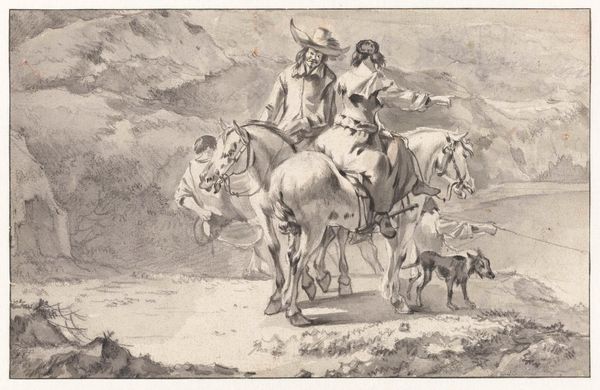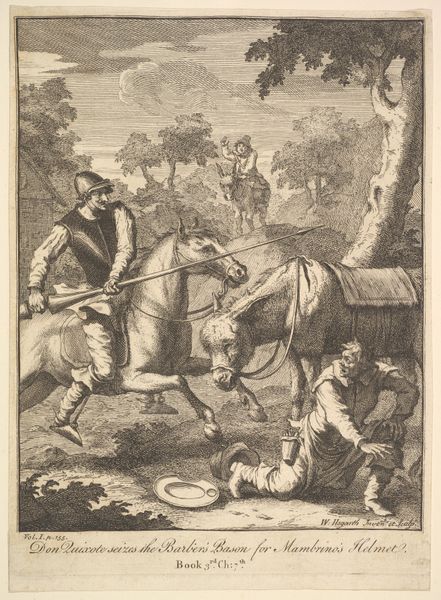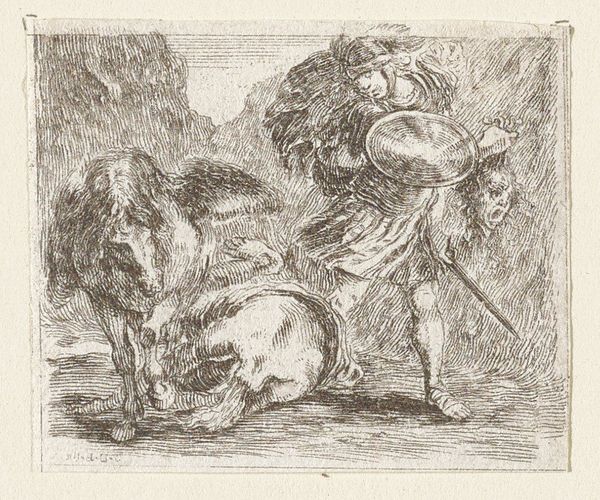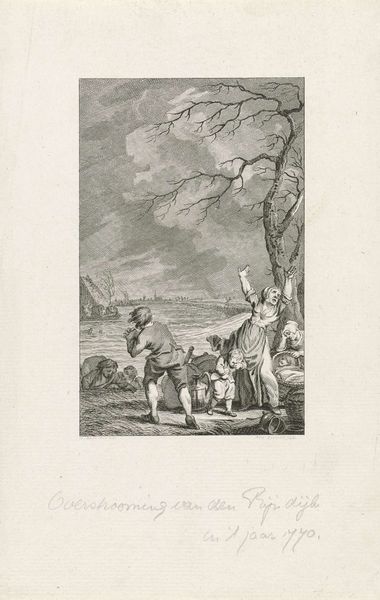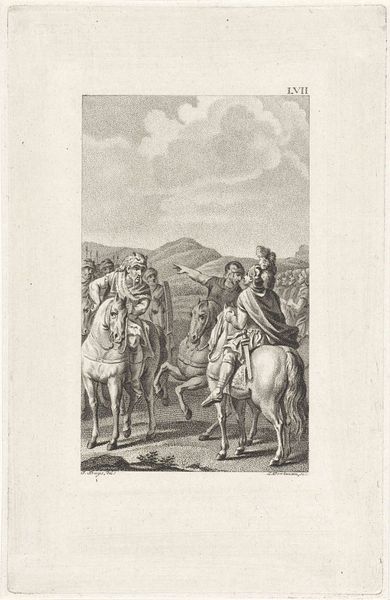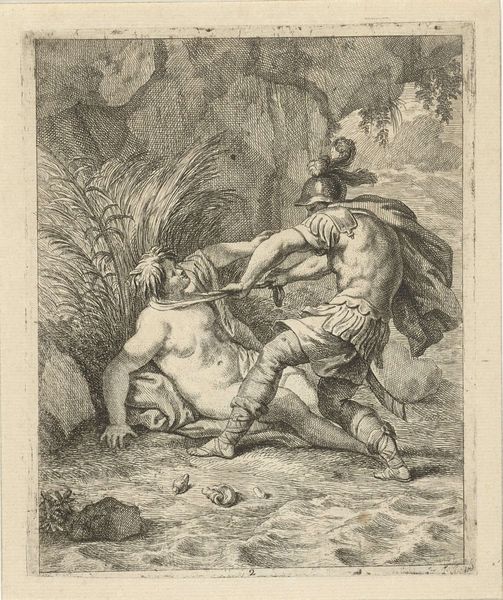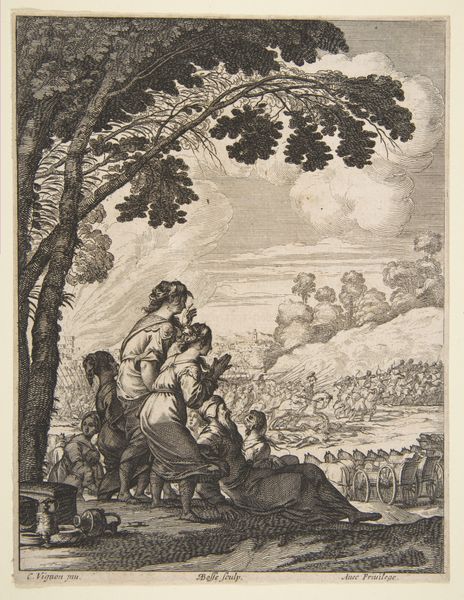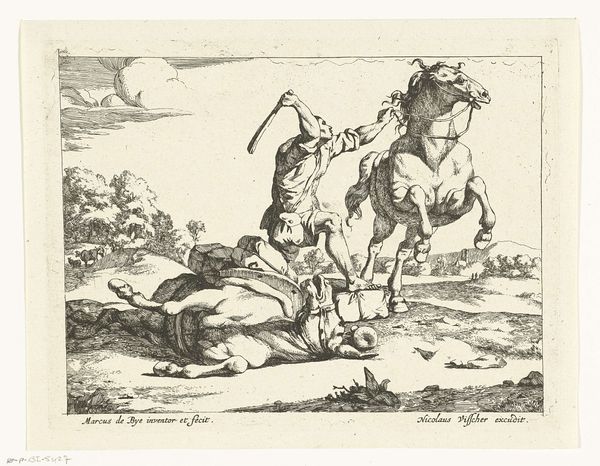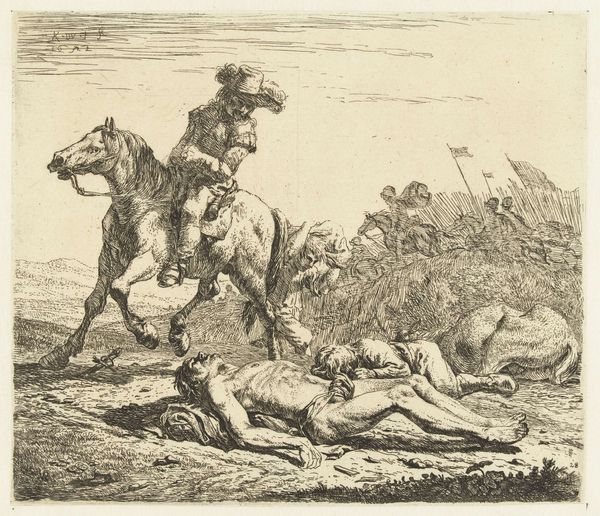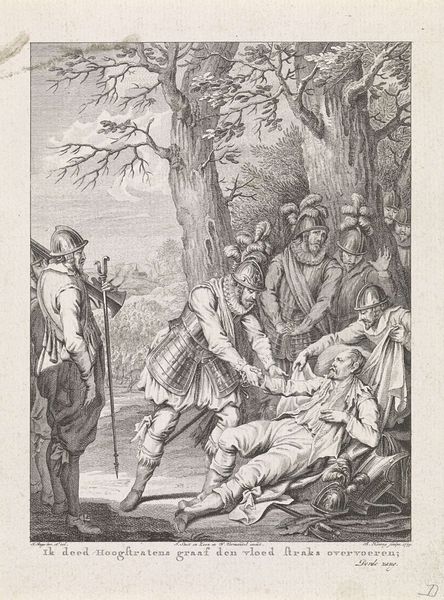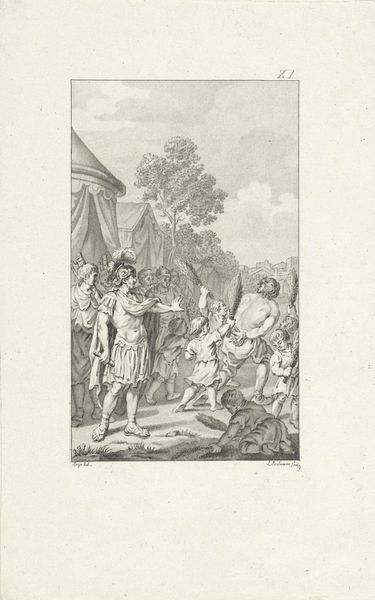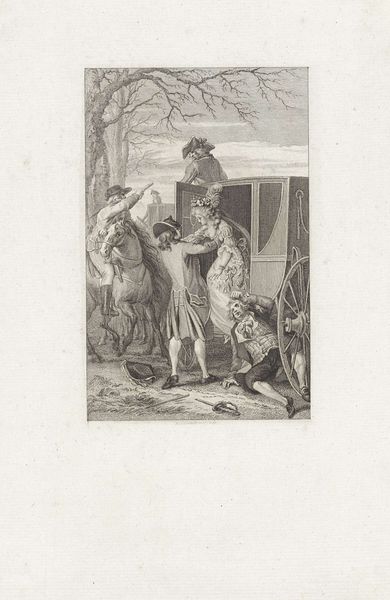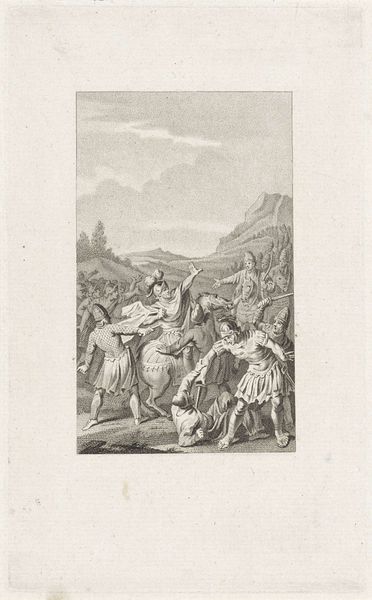
drawing, print, etching, ink, pencil, engraving
#
portrait
#
drawing
#
narrative-art
# print
#
etching
#
classical-realism
#
figuration
#
ink
#
classicism
#
pencil
#
history-painting
#
academic-art
#
engraving
Dimensions: height 140 mm, width 82 mm
Copyright: Rijks Museum: Open Domain
Curator: This drawing, created around 1795 by Ludwig Gottlieb Portman, is entitled "Dood van Lucius Emilius Paulus," depicting the death of Lucius Aemilius Paullus Macedonicus. It’s currently held at the Rijksmuseum. Editor: It has a stark, almost theatrical quality. The somber mood created by the grayscale and the positioning of the figures really jumps out. Curator: Yes, Portman's portrayal aligns with the values of Classicism that reigned in Europe during this period. The composition evokes classical sculptures and ideals, focusing on noble sacrifice. Look at how he uses light and shadow to model the figures, aiming for ideal form, which elevates the scene from mere depiction to historical narrative. Editor: It's also very detailed, isn't it? You can clearly distinguish the textures of the fabrics and even the musculature of the figures, all contributing to a sense of gravity and realism. This attention to detail, while striving for that ideal you mentioned, reminds one of Neoclassical aesthetic principles in the service of a heroic story. Curator: Indeed. The meticulous detail extends to the context of war in which Paullus found himself—in service of the republic that was Rome. This image would likely have resonated deeply with viewers grappling with revolutionary and post-revolutionary turmoil across Europe, contemplating themes of leadership, sacrifice, and duty to the state. It idealizes those traits and expresses their connection to citizenship. Editor: Absolutely. And speaking formally again, that sweeping landscape with the mounted army adds layers to the psychological intensity while echoing classical friezes. Each mark of the pencil and graver serves a representational aim, furthering a cohesive image of suffering for a cause. Curator: A moving intersection of art, politics, and societal values beautifully preserved here in etching, engraving, pencil, and ink. Editor: Yes, one truly grasps how a work on paper can possess monumental emotional power simply through form, light, and narrative suggestion.
Comments
No comments
Be the first to comment and join the conversation on the ultimate creative platform.
